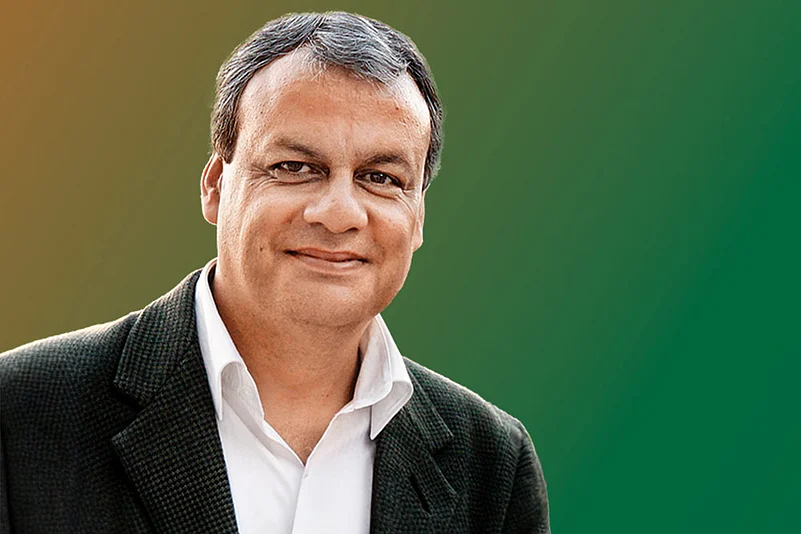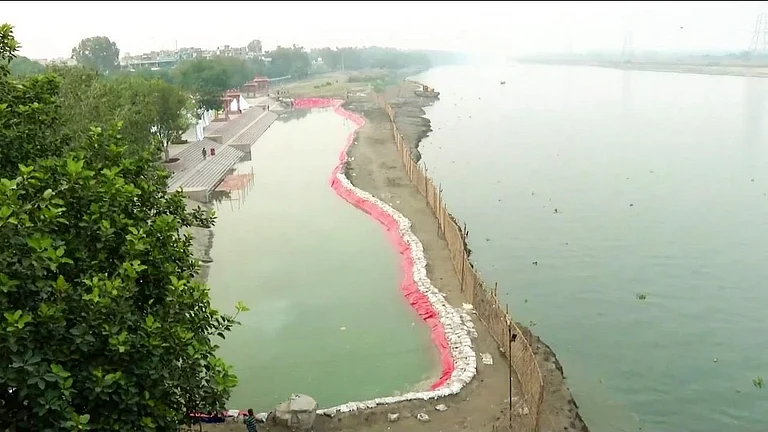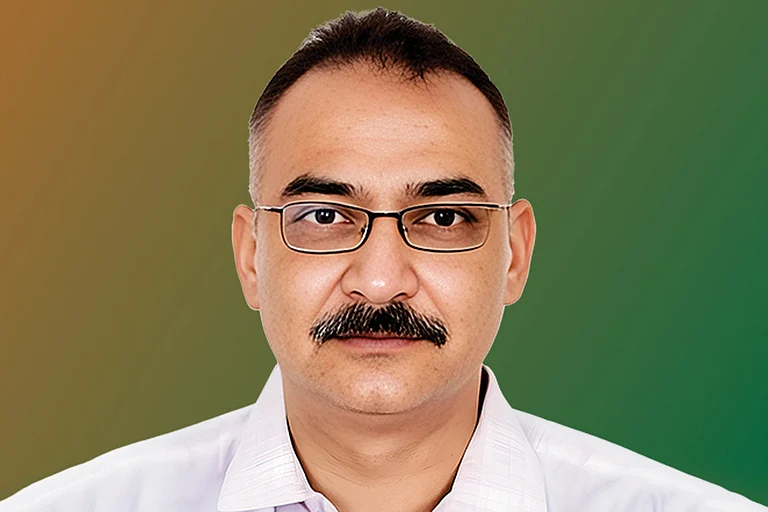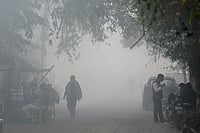Few geographical entities in the world have been elevated to a spiritual status that the Ganga has attained. The glacial mouth of the Ganga, Gaumukh is located in the Gangotri National Park in the district of Uttarkashi. Of the four Char Dhams in the Himalayas, the four principal places of pilgrimage in Uttarakhand, Gangotri and Yamunotri are located here. The district is home to social groups such as the Jadhs, whose primary occupation has been agro-pastoralism and cross-border trade. Transhumance is a common feature. The source of the Ganga, the glacier of Gaumukh, is actually the source of the Bhagirathi, the principal stream of the Ganga that flows downstream to the district of Tehri. The landscape hosts a complex river system. Numerous unnamed glacial moraines and streams join the Bhagirathi river from its source up to the township of Gangotri.
The Bhagirathi river merges with the Alaknanda at Devprayag in the district of Tehri and this confluence gives birth to what we call the Ganga in the Himalayas. The term Tehri is derived from Trihari, which signifies a place that washes away three types of sin, namely those born out of thought (mansa), word (vacha) and deed (karmana). The term also refers to the residence of Tri-Hari or three deities who are said to reside in the three streams of Bhagirathi, Bal Ganga and Bhilangana, at this spot. The confluence of these three streams lay in Old Tehri, a site now submerged by the dam on the Ganga.
The Mandakani river, the third tributary, originates from the Chorabari Glacier in Rudrprayag district. On the banks of the Mandakani, Lord Shiva is believed to have meditated, for the benefit of the universe. Mandakini originates from the glacial formations at the rear of the temple of Kedarnath. To the north of Kedar there are many peaks, but the major mountain is Swargarohini, in the Chaukhamba Range. Mandakini meets the Ganga at Rudraprayag. Rudraprayag, therefore, becomes one of the Panch Prayag or the five confluences in the Ganga river system, which are considered sacred.

After flowing through mountainous terrain, the river enters the quaint town of Rishikesh. Downstream from Rishikesh, in the Virbhadra region, the major chunk of water gets diverted through the upper Ganga canal which flows from Haridwar to Roorkee. Ganga, locally called Neel Ganga here, takes the route of Najibabad, parallel to the Upper Ganga Canal starting from the Chilla Dam.
The Chilla region is part of Rajaji National Park landscape and is very rich in flora and fauna. Small settlements of Van Gujjars are also present in the forests of the region. The Van Gujjars are a trans-Himalayan nomadic community that graze water buffaloes.
The Yamuna, like her sister Ganga, is a river inseparable from Indian culture. The mighty Yamuna begins its journey on the terrestrial realm by flowing through stunning mountain territory from her source at Yamunotri. On its journey downstream, it is joined by the river Tons and Pabbar. It lands in the plains at Dak Patthar, on the western edge of the city of Dehradun. Interestingly, the Ganga flows through the eastern edge of this valley. Flowing past the sacred site of Paonta Sahib, the river flows towards the megalopolis of Delhi.

For ages, people living along the Yamuna’s banks in the Himalayas have imagined the river as the tears of Babruvahana, the son of Arjuna and Ulupi, from Mahabharata. Barabarik or Babruvahana had vowed to fight on the losing side. Being invincible, Krishna tricked him into donating his torso to conclude the battle.
Therefore, it is believed that he witnesses the battle, his tears rolling down as the river. Yamuna is also considered as the one who absorbed Shiva’s anger and remorse when his consort Sati immolated herself in the sacrificial fire her own father had consecrated. She is the sister of Yamaraj, the god of death and ultimate justice. She is Kalindi, sister to the venerated and holy Ganga, as much as she is the daughter of the Himalayas.
The Ganga and the Yamuna are vital to India’s spiritual, cultural and ecological fabric. Protecting and rejuvenating these rivers requires a multifaceted approach that combines conservation efforts, sustainable practices and community engagement while addressing the challenges posed by pollution, over-extraction and climate change.
MORE FROM THIS ISSUE
Lokesh Ohri is an anthropologist and author, including of Ganga Katha: Samakshata Vol. I and Samagrata Vol. II






























